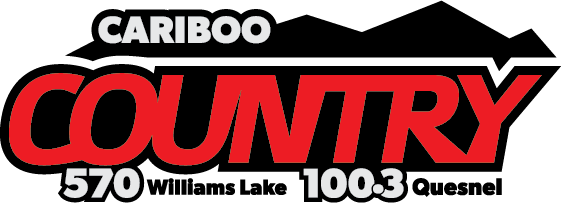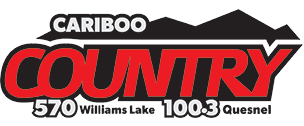It’s a grim milestone BC Chief Coroner Lisa Lapointe didn’t want to reach again.
The provincial coroner’s service reported 1,716 deaths in 2020, which is a new record surpassing the previous high of 1,549 set in 2018.
Much of the impact was felt in our region as Northern Health tallied 132 illicit drug deaths, skyrocketing past the 2019 mark of 67.
Fifty-eight of those deaths took place in Prince George, which is also a new high after surpassing the previous record of 51 that was established in 2018.
When dissecting the past few years (2018-2020), PG saw 142 overdose deaths, trailing only Kamloops (144) and Vancouver (1050).
To make matters worse, Northern Health’s drug toxicity death rate of 46 per 100,000 thousand people was the worst among all five health authorities in BC – seven-points higher than Vancouver Coastal which came in second at 39.
The Coroner Service also noted the Northern Interior Health Service Delivery Area, which encompasses PG-Quesnel-Burns Lake and the Robson Valley, had the second-highest drug toxicity death rate at 57.8 per 100-thousand people, trailing only Vancouver (58.9).
In an exclusive interview with Vista Radio, Lapointe noted that stop-gap solutions such as Naloxone proved effective in reversing overdoses and saving lives – that alone is not going to stem the tide of this public health emergency.
“We know that problematic substance use is pervasive across the province. We know that in 2019, there were a number of harm reduction measures implemented that really made an impact in terms of fatalities by reversing overdoses and that saved lives. But, it really didn’t go to the root of the challenges people are experiencing.”
Lapointe noted while additional safe-injection sites and treatment beds would be positive it still wouldn’t be enough to put a dent into this crisis, which has now claimed over 7,000 lives since April of 2016.
“They don’t help people long-term for the most part in terms of becoming well and reducing their drug dependency. What we have been recommending is access to safe supply so that physicians and nurse practitioners can provide pharmaceutical substances such as opioids to get them away from the illicit market.”
Earlier this month, Minister of Mental Health and Addictions Sheila Malcolmson penned a letter to Federal Minister of Health Patty Hajdu asking Ottawa to consider an exemption for the province to allow for the decriminalization of small possession of illicit drugs.
Lapointe believes if approved, this would go a long way in reducing the stigma that is often attached to illicit drug users.
“The policies that we’ve had in this country have been a boon to drug dealers because we force people who have become dependent on these substances to purchase from somebody who is intent on profit. And really, that person’s goal is to have the more people addicted the better because that is more profit.”
“We know that for decades, this country has had a punishment approach to substance use and that has really just brought us to where we are today. The hope is by decriminalizing we can shift that needle from punishing to helping.”
“The goal of that is to reduce the stigma so people aren’t fearful of being arrested and again, to support people on their path to recovery and wellness.”
Another step forward would be for Prime Minister Justin Trudeau and his Liberal government to declare the illicit drug toxicity crisis a national health emergency.
“It is a public health emergency as we are seeing thousands of people die and it absolutely would help to have that declared an emergency and give it the supports and focus it really needs.”
She is of the opinion we are starting to see a philosophical shift on decriminalization after the Canada Association of Chiefs of Police came out in July and supported this motion.
“That was a huge shift. We would not have even imagined that five years ago because they recognize now that as the folks dealing with this on the front lines, the police recognize that simply arresting people for having substances really only makes a bad situation worse. Now that person may have a criminal record, they may have to serve a period of time in incarceration or have to pay a fine – that does nothing towards helping them to wellness.”
Here is the letter from @s_malcolmson to @PattyHajdu asking for the Feds to consider an exemption for B.C. to allow for decriminalization of small possession of illicit drugs. #bcpoli pic.twitter.com/1ylg8IBaNm
— Richard Zussman (@richardzussman) February 11, 2021
Quite often, Lapointe is often hearing from families as well as those within the Death Review Panel that many people are ready to go into a detox facility or have completed a similar process.
The Chief Coroner acknowledged there can be long waits depending on where you live in BC.
However, Lapointe admits there are major gaps that need to be filled in order to boost more positive outcomes.
“What we don’t have data on right now is how many people are waiting for detox in any given health authority, how long is it taking and how many people are dropping off the list because they can’t wait and are going back to using. How many people are waiting to get into a treatment and recovery centre and when they do, what does that look like? How many people succeed and how many people find success – all of those measures are currently not available and that data is not kept. This would really help in determining what does and doesn’t work.”
As for the current definition of what successful treatment looks like, the details of that are equally as murky.
“Right now in this province, we really don’t know what’s working and what’s not working in terms of treatment and recovery and that is some work we have recommended government do in terms of what is the evidence to show us what is meaningful and those supports need to be available in the communities where they live.”
“What type of treatment is helping people to wellness versus another type of treatment? We don’t actually have that type of data right now and we don’t know for example last year how many people entered or finished a recovery service. Public versus private, which were more effective and what is effective called? Is it effective if somebody doesn’t use substances for six months or a year, but in some cases, we know that they put some people at risk because if you are abstaining from substance use and then go back and use – your tolerance is reduced,” added Lapointe.
Lapointe added making treatment centres government-run and shifting away from the private or ad hoc models that currently exist would certainly give BC a leg up in eroding the illicit drug overdose crisis.
“We know that families spend tens of thousands or even hundreds of thousands of dollars for treatment centres that have no proven track record. They don’t report (private centres) the number of people that go through their centres and we don’t know how many of them become well overtime or maybe they die because they haven’t gotten any follow-up support.”
“You can’t set up a veterinary office unless you have licensing, education, and qualifications to treat animals but you can treat addicted people. You can set up a facility as long as you comply with bare minimum regulations you can report to treat people.”
“That cannot be acceptable,” Lapointe said.
In 2020, 69% of those who died were between the ages of 30-59 and men accounted for 81% of all deaths.
Lapointe mentioned in a lot of cases, the ones who are struggling are productive members of society.
“Many of them are men with jobs. Some of them are in the trades and transportation sector. They are using after work or potentially during the lunch hour and they are using alone, those are the places where the education, support, and recovery resources need to be focused.”
For a link to the report click here.
Something going on in the Cariboo you think people should know about?
Send us a news tip by emailing [email protected].








